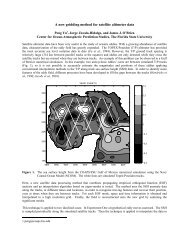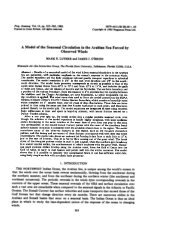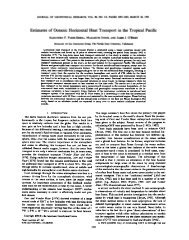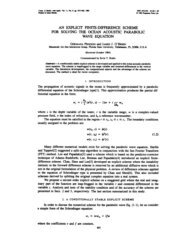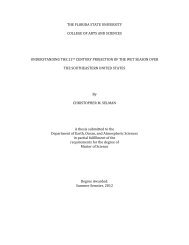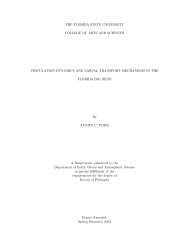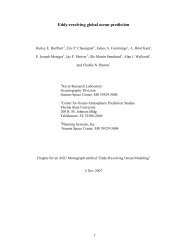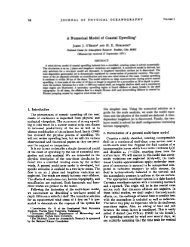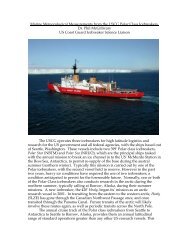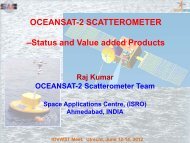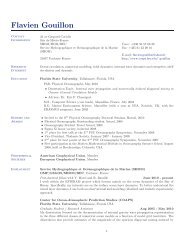Self - Induced Ekman Pumping Over Oceanic Mesoscale Eddies
Self - Induced Ekman Pumping Over Oceanic Mesoscale Eddies
Self - Induced Ekman Pumping Over Oceanic Mesoscale Eddies
Create successful ePaper yourself
Turn your PDF publications into a flip-book with our unique Google optimized e-Paper software.
Conclusions<br />
1) Eddy-induced SST variability consists of horizontal advection by the<br />
azimuthal velocity of the eddies that is consistent with the coupling found<br />
previously between SST and wind speed along meandering SST fronts.<br />
2) The <strong>Ekman</strong> pumping associated with these SST anomalies over the<br />
eddy interiors is usually secondary to the <strong>Ekman</strong> pumping associated<br />
with eddy surface currents.<br />
• This <strong>Ekman</strong> pumping is clearly evident in the surface winds measured by QuikSCAT.<br />
• The small differences between the <strong>Ekman</strong> pumping velocity deduced from QuikSCAT data<br />
and the geostrophic velocity computed from altimeter data are consistent with noise in the<br />
SSH fields that results in small mislocations of the eddy centroids and hence misalignment of<br />
the <strong>Ekman</strong> pumping velocity fields.<br />
3) <strong>Ekman</strong> pumping over anticyclones appears to sustain blooms of<br />
phytoplankton within the cores of eddies in the South Indian Ocean<br />
during wintertime.<br />
• The reason that this is limited to wintertime is thought to be that the mixed layer is sufficiently<br />
deep to reach the nutricline, thus allowing the injection of nutrients ino the eddy interior where<br />
they can be utilized by phytoplankton trapped in the cores of anticyclones.



